Key Takeaways
1. Transitional Objects: Bridging Inner and Outer Worlds
My contribution is to ask for a paradox to be accepted and tolerated and respected, and for it not to be resolved.
The intermediate area. Transitional objects (like a blanket or teddy bear) and phenomena (like babbling or repetitive tunes) exist in a crucial intermediate space between a baby's inner psychic reality and the external world. They are the infant's first "not-me" possessions, marking the beginning of recognizing something separate from the self. This area is vital because it's not challenged – we don't ask the baby if they created the object or found it.
The paradox of creation. The core idea is a paradox: the baby creates the transitional object out of need and love, yet the object was already there waiting to be found. Accepting this paradox is essential for healthy development. Trying to resolve it intellectually leads to a loss of its value and can hinder the development of the capacity for illusion, which is fundamental to art, religion, and creative living.
Fate of the object. In health, the transitional object is not forgotten or repressed but gradually loses its specific meaning. Its function diffuses into the broader cultural field, becoming the basis for shared experiences in art, religion, and imaginative life. This early stage, facilitated by a "good-enough" mother's adaptation, allows the infant the necessary illusion that their creative impulse finds a corresponding reality.
2. The Potential Space: Where Play and Culture Live
I put forward for discussion of its value as an idea the thesis that for creative playing and for cultural experience, including its most sophisticated developments, the position is the potential space between the baby and the mother.
Beyond inner and outer. Human experience isn't limited to just inner psychic reality or the external, shared world. There's a third, vital area: the potential space. This space exists between the individual and the environment, originating in the relationship between the baby and the mother. It's where play begins and expands into the entire realm of cultural experience.
Built on trust. The extent and richness of this potential space depend entirely on early life experiences, specifically the baby's growing confidence in the mother-figure's reliability and dependability. This trust allows the baby to tolerate the idea of separation, because the space between is filled with creative activity. Without this foundation of trust, the space may be minimal or filled with persecutory elements.
Continuity of experience. This potential space is where the subjective object meets the objectively perceived object. It's the area of interplay between feeling merged and feeling separate. It's highly variable between individuals, unlike the relatively fixed nature of inner and outer reality, and its development is crucial for linking the individual to the cultural heritage and enabling contributions to it.
3. Playing: The Path to Creative Living and Self-Discovery
It is in playing and only in playing that the individual child or adult is able to be creative and to use the whole personality, and it is only in being creative that the individual discovers the self.
The essence of life. Playing is not merely a pastime; it is a fundamental, creative experience essential for growth and health. It's the primary way individuals, from infancy to adulthood, engage with the world and discover who they are. Playing allows for the use of the whole personality in a way that other activities may not.
Distinct from instinct. While playing can involve bodily excitement, its essence is not rooted in instinctual drive or climax. The excitement comes from the precarious interplay between inner psychic reality and the manipulation of external objects. If instinctual arousal becomes too dominant, playing stops or is spoiled. Playing has its own satisfaction, distinct from instinctual gratification.
Therapeutic core. In psychotherapy and psychoanalysis, playing is central. If a patient cannot play, the therapist's first task is to help them reach a state where playing is possible. Psychotherapy happens in the overlap of the patient's and therapist's play areas. The therapist's role is often to provide a reliable presence that allows the patient to play, be creative, and ultimately discover the self.
4. The Mother's Mirror: Seeing Yourself to Exist
I am suggesting that, ordinarily, what the baby sees is himself or herself.
First reflection. For a sighted infant, the mother's face serves as the first mirror. When the baby looks at the mother, what they see reflected back is their own self, based on the mother's sensitive response to what she sees in the baby. This experience of being seen and reflected is profoundly important for the baby's developing sense of existence.
Foundation for perception. This initial experience of seeing oneself in the mother's face is the precursor to later perception. The sequence is: "When I look, I am seen, so I exist. I can now afford to look and see." If the mother consistently fails to reflect the baby, instead showing only her own mood or defenses, the baby sees the mother's face but not themselves. This can lead to a focus on mere perception over apperception and hinder the development of a vital two-way exchange with the world.
Psychopathology of the unreflected self. A baby who is not adequately reflected may grow up feeling unreal or puzzled by mirrors. They may struggle to feel seen or to connect with their own image. This failure in the mother's mirror-role can contribute to schizoid states and difficulties in establishing a stable sense of self, highlighting the environment's crucial role in the earliest stages of personality development.
5. The Capacity to 'Be': The Foundation of Self
The study of the pure distilled uncontaminated female element leads us to BEING, and this forms the only basis for self-discovery and a sense of existing...
Beyond doing. Human personality involves both male and female elements in everyone. While the male element is associated with 'doing' – instinctual drives, activity, and relating to separate objects – the pure female element is fundamentally about 'being'. This capacity for simply existing, for feeling real, is the absolute prerequisite for self-discovery and developing a sense of identity.
Primary identification. The female element relates to the object (like the breast) not by doing something to it, but by being it, or identifying with it in a primary, non-instinctual way. This experience of identity with the object lays the foundation for the sense of self. It's a state of unity that precedes the idea of being-at-one-with a separate entity.
Environmental necessity. The capacity to 'be' is not inborn but depends on a good-enough environmental provision, particularly the mother's ability to simply 'be' there in a reliable way. If the mother cannot provide this, the baby may develop without the capacity to be, or with a crippled sense of existence. This highlights how the environment's behavior is intrinsically part of the individual's earliest personal development.
6. Using the Object: Survival, Reality, and Destruction
It is the destruction of the object that places the object outside the area of the subject’s omnipotent control.
More than relating. Using an object is a more sophisticated developmental achievement than simply relating to one. Relating can be to a subjective object (a projection), but using an object requires it to be perceived as real, external, and part of shared reality. This transition is crucial for engaging with the world as it truly is.
The role of destruction. The difficult step between relating and using is the subject's placing the object outside their omnipotent control. This happens through the subject's impulse to destroy the object (in unconscious fantasy). For the object to be usable, it must survive this destruction. The object's survival (meaning it does not retaliate or change quality) confirms its independent existence and reality.
Foundation for reality and love. The object's survival of the subject's destructive impulse is what places it firmly in external reality. This ongoing, unconscious destruction becomes the necessary backcloth for loving a real, external object. Without this experience of surviving destruction, the object remains a subjective phenomenon, and the subject cannot truly use it or engage with the world of shared reality.
7. Dreaming vs. Fantasying: Real Experience vs. Dissociated Defense
By contrast, however, fantasying remains an isolated phenomenon, absorbing energy but not contributing-in either to dreaming or to living.
Integrated experience. Dreaming is deeply connected to both inner psychic reality and the external world. It processes life experiences and contributes to the individual's sense of self and object-relating. Dreaming and living are seen as being of the same order, enriching each other in complex ways familiar to psychoanalysis.
Static and isolated. Fantasying (daydreaming), in contrast, is often a dissociated state. It absorbs mental energy but remains static and isolated, failing to contribute meaningfully to either dreaming or real living. It can be a defense against engaging with reality or feeling the intensity of inner experience, sometimes stemming from early trauma or a need to maintain omnipotence in a hidden realm.
Clinical distinction. While subtle, the difference is crucial clinically. Dreaming material can be interpreted and worked with, revealing layers of meaning connected to the patient's life. Fantasying, being dissociated, is often inaccessible or meaningless in analysis, representing a state of 'doing nothing' while seeming busy internally, hindering genuine engagement and growth.
8. Male and Female Elements: Different Ways of Relating and Being
The male element does while the female element (in males and females) is.
Universal elements. Both male and female elements exist in everyone, regardless of biological sex. These elements represent fundamental modes of relating to the world and objects. Understanding their distinct natures is key to grasping the complexities of personality development and psychopathology.
Doing vs. Being. The male element is characterized by 'doing'. Its object-relating is backed by instinctual drives (like oral erotism, sadism, etc.) and involves interacting with objects perceived as separate. The female element, however, is characterized by 'being'. Its primary mode of relating is identity with the object (being the breast), forming the basis for the sense of existence and self.
Dissociation and health. While ideally integrated, these elements can be highly split off. Severe dissociation, often rooted in early environmental failures (like a mother's inability to see her male baby as male), can lead to significant difficulties in relating, identity confusion, and specific forms of psychopathology. Healthy development involves integrating these elements, allowing for both instinctual engagement ('doing') and a stable sense of self ('being').
9. Interrelating: Beyond Instinct to Identification
A new capacity for object-relating has now developed, namely, one that is based on an interchange between external reality and samples from the personal psychic reality.
Post-'I am' relating. After the individual has achieved a sense of being a unit ('I am') and established inner psychic reality (around the depressive position), a new, sophisticated capacity for object-relating emerges. This goes beyond earlier instinct-backed relating or primary identification. It involves a dynamic interchange between the inner world and external reality.
Mechanisms of connection. This new capacity is based on the establishment and use of introjective and projective identification mechanisms. These allow the individual to 'stand in another person's shoes', to feel concerned for others, and to feel that others can understand them. This form of relating is more closely allied with affection and empathy than with raw instinctual drive.
Clinical significance. Difficulties in using these mechanisms can lead to significant interpersonal problems, such as an inability to feel concern, lack of empathy, or feeling fundamentally misunderstood or alienated. Therapeutic work often involves helping patients develop or strengthen this capacity for cross-identification, enabling richer, more connected relationships with others perceived as separate, complex individuals.
Last updated:
FAQ
1. What is "Playing and Reality" by D.W. Winnicott about?
- Exploration of Transitional Phenomena: The book investigates the concept of "transitional objects" and "transitional phenomena," focusing on the intermediate area between a child's inner reality and the external world.
- Developmental Psychology and Psychoanalysis: Winnicott draws from his experience as a pediatrician and psychoanalyst to discuss how play, creativity, and cultural experience emerge in early childhood and continue to shape adult life.
- The Role of Play: Central to the book is the idea that play is fundamental to emotional development, creativity, and the sense of self.
- Cultural and Clinical Implications: The book extends its analysis to the significance of cultural experience, the therapeutic process, and the development of individuality.
2. Why should I read "Playing and Reality" by D.W. Winnicott?
- Foundational Psychoanalytic Concepts: The book introduces and elaborates on key ideas like transitional objects, the potential space, and the importance of play, which are now foundational in psychoanalytic and developmental theory.
- Insight into Creativity and Self: Winnicott’s work offers a profound understanding of how creativity, play, and cultural engagement are essential for a fulfilling and authentic life.
- Clinical Relevance: Therapists, educators, and parents can gain practical insights into child development, the therapeutic process, and the roots of psychological health and pathology.
- Accessible and Rich Case Studies: The book is filled with clinical examples and real-life observations, making complex theories relatable and applicable.
3. What are the key takeaways from "Playing and Reality" by D.W. Winnicott?
- Transitional Objects Bridge Worlds: Objects like blankets or teddy bears help children transition from subjective omnipotence to recognizing external reality.
- Play as a Developmental Space: Play occurs in a "potential space" between inner and outer reality, fostering creativity, self-discovery, and cultural experience.
- Creativity is Essential to Living: Living creatively, not just complying with external demands, is central to feeling life is worth living.
- Therapeutic Implications: Psychotherapy is most effective when it enables patients to play, be creative, and use the therapist as a real object, not just a projection.
4. What are transitional objects and transitional phenomena according to "Playing and Reality"?
- Definition of Transitional Objects: Transitional objects are items (like a blanket or teddy bear) that a child uses to navigate the space between self and other, or inner and outer reality.
- Transitional Phenomena: These are behaviors and experiences (such as thumb-sucking, babbling, or playing with objects) that occur in the intermediate area between subjective experience and objective reality.
- Function in Development: Transitional objects and phenomena help the child gradually accept the separateness of the external world while maintaining a sense of continuity and security.
- Not Just Symbolic: The value of the transitional object lies not only in its symbolic meaning but in its actual use and the paradox it embodies—being both created by the child and existing independently.
5. How does D.W. Winnicott define "play" in "Playing and Reality"?
- Play as a Potential Space: Play takes place in a "potential space" between the child and the caregiver, neither wholly internal nor external.
- Foundation for Creativity: Play is the basis for creativity, cultural experience, and the development of the self.
- Distinct from Instinctual Activity: Winnicott distinguishes play from activities driven by instinct or mere compliance; play is inherently creative and satisfying.
- Therapeutic and Developmental Role: The ability to play is a sign of psychological health, and therapy aims to restore or enable play when it is absent.
6. What is the "potential space" in "Playing and Reality" by D.W. Winnicott?
- Intermediate Area of Experience: The potential space is the area between the individual and the environment, where play, creativity, and cultural experience occur.
- Origin in Early Relationships: It develops from the relationship between the baby and the "good-enough" mother, who provides a reliable environment for the child to explore.
- Location of Cultural Experience: Winnicott locates cultural experience, play, and transitional phenomena in this space, which is neither purely internal nor external.
- Variable Among Individuals: The size and richness of the potential space depend on early experiences of trust and reliability in caregivers.
7. How does "Playing and Reality" by D.W. Winnicott explain the development of the self?
- Creativity and Being: The self is discovered and affirmed through creative activity, especially in play, rather than through compliance or external achievement.
- Search for the Self: Many people seek their self in creative products, but true selfhood is found in the experience of being, not just doing.
- Role of the Environment: A "good-enough" environment is necessary for the child to relax, play, and eventually discover the self.
- Therapeutic Implications: Therapy provides a setting where formless, non-purposive experience can lead to creative impulses and self-discovery.
8. What is the significance of creativity in "Playing and Reality" by D.W. Winnicott?
- Creativity as a Way of Living: Creativity is not limited to artistic production but is a way of engaging with the world that makes life feel real and meaningful.
- Contrast with Compliance: Living creatively is contrasted with living in compliance, which leads to a sense of futility and lack of meaning.
- Universal Human Capacity: Creativity is seen as a universal human potential, present in all healthy individuals, not just artists.
- Threats to Creativity: Environmental failures, trauma, or excessive compliance can stifle creativity, leading to psychological distress or illness.
9. How does "Playing and Reality" by D.W. Winnicott describe the use of objects and object-relating?
- From Relating to Using: Winnicott distinguishes between relating to objects (which can be subjective) and using objects (which requires recognizing their independent existence).
- Destruction and Survival: The transition to using an object involves the child "destroying" the object in fantasy and experiencing its survival, which confirms its reality.
- Therapeutic Application: In therapy, the patient must be able to use the analyst as a real object, surviving the patient’s destructive impulses, for deep change to occur.
- Developmental Milestone: The capacity to use objects is a sophisticated achievement, dependent on both maturation and a facilitating environment.
10. What is the role of the mother and family in child development according to "Playing and Reality"?
- Mirror Role of the Mother: The mother’s face acts as a mirror, reflecting the baby’s self back to them and supporting the development of self-awareness.
- Holding, Handling, Object-Presenting: The mother provides holding (physical and emotional support), handling (care), and object-presenting (introducing the world), all crucial for healthy development.
- Family as Ongoing Mirror: As the child grows, the family continues to reflect the child’s self, supporting identity and self-esteem.
- Pathology of Non-Reflection: If the mother or family fails to reflect the child’s self, the child may develop a sense of unreality or seek self-reflection elsewhere.
11. How does "Playing and Reality" by D.W. Winnicott address adolescence and the transition to maturity?
- Adolescence as a Crisis of Growth: Adolescence involves a re-enactment of earlier developmental struggles, including issues of dependence, independence, and aggression.
- Role of the Family and Society: The family and society must provide containment and not abdicate responsibility, allowing adolescents to mature at their own pace.
- Immaturity as Potential: Winnicott values the immaturity of adolescence as a source of creativity, idealism, and new ideas, which should not be prematurely foreclosed.
- Dangers of False Maturity: Forcing adolescents into adult roles too soon can stifle their development and lead to psychological problems.
12. What are the best quotes from "Playing and Reality" by D.W. Winnicott and what do they mean?
- "It is in playing and only in playing that the individual child or adult is able to be creative and to use the whole personality, and it is only in being creative that the individual discovers the self."
- This quote encapsulates Winnicott’s central thesis: play is the foundation of creativity and self-discovery.
- "The potential space between baby and mother, between child and family, between individual and society or the world, depends on experience which leads to trust."
- Here, Winnicott highlights the importance of early relationships in creating the space for play, culture, and personal growth.
- "The object is a symbol of the union of the baby and the mother (or part of the mother). This symbol can be located."
- This quote explains the transitional object as a symbol of the child's evolving relationship with the mother and the world.
- "Creativity is the universal, and it belongs to health."
- Winnicott asserts that creativity is not a rare gift but a fundamental aspect of healthy living.
- "Psychotherapy takes place in the overlap of two areas of playing, that of the patient and that of the therapist."
- This statement redefines therapy as a shared creative process, not just interpretation or analysis.
Review Summary
Playing and Reality by D.W. Winnicott is highly regarded for its insights on child development, creativity, and psychoanalysis. Reviewers praise Winnicott's concepts of transitional objects, play, and the "good enough" parent. Many find the book profound and life-changing, particularly for therapists and those interested in psychology. However, some criticize the dated language, complex psychoanalytic jargon, and lack of empirical evidence. Despite these shortcomings, most readers appreciate Winnicott's unique perspective on human growth and the importance of creativity in meaningful living.
Similar Books
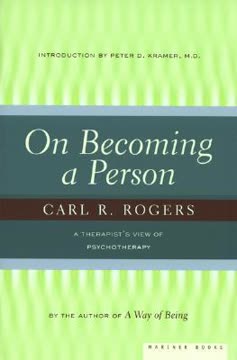
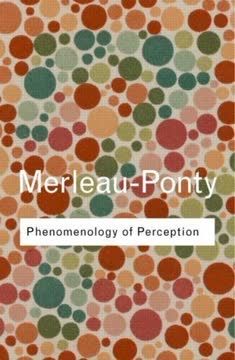

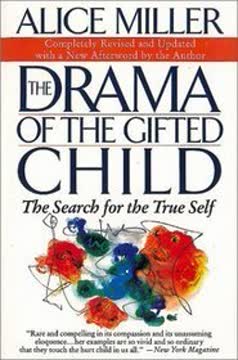

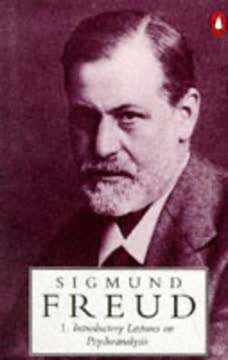
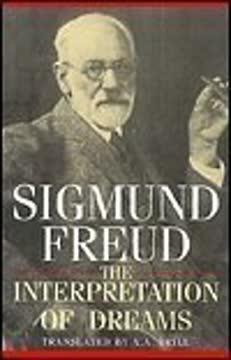
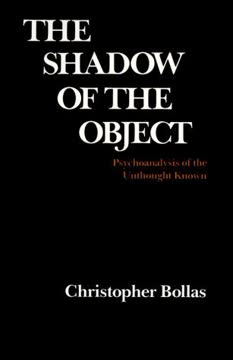
Download PDF
Download EPUB
.epub digital book format is ideal for reading ebooks on phones, tablets, and e-readers.





